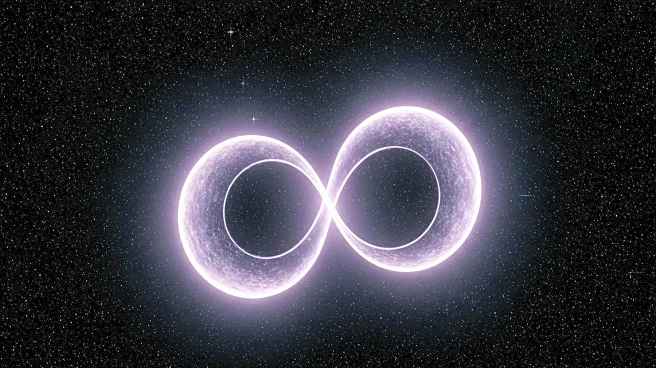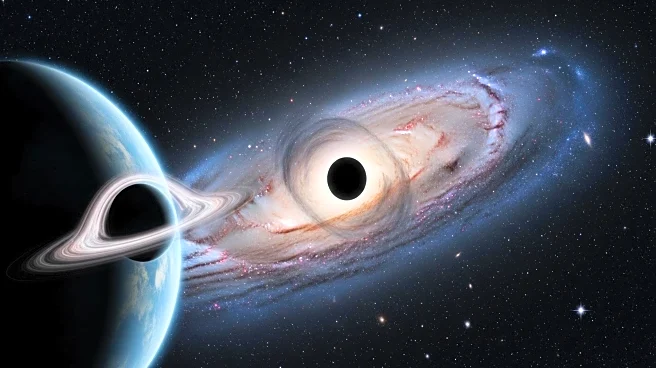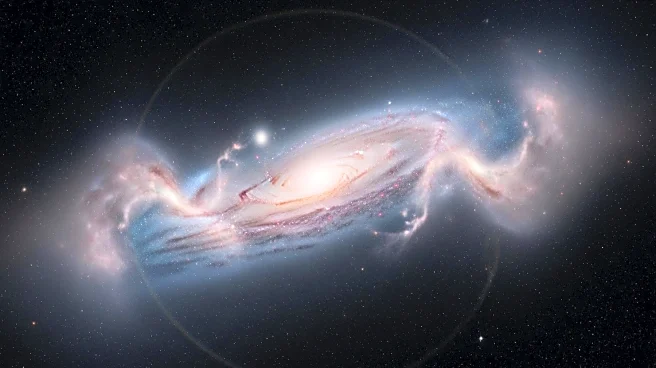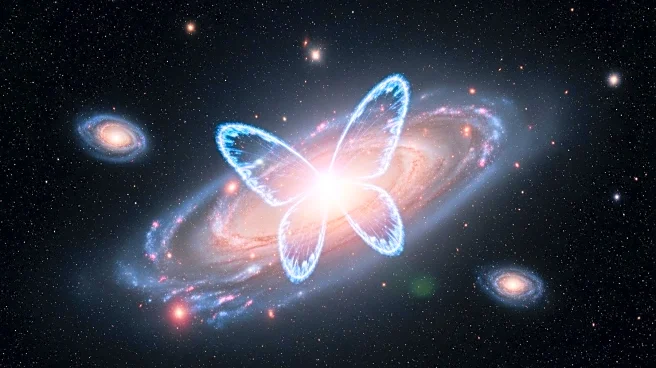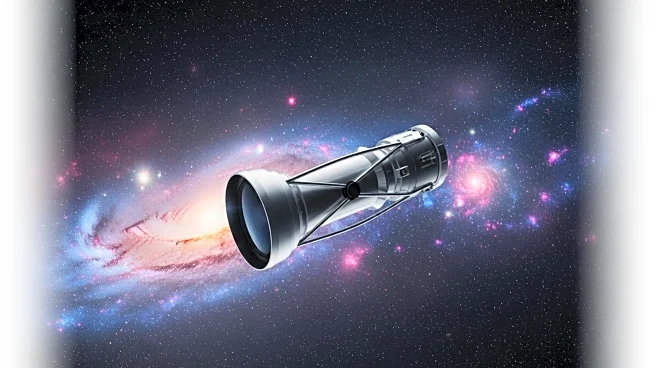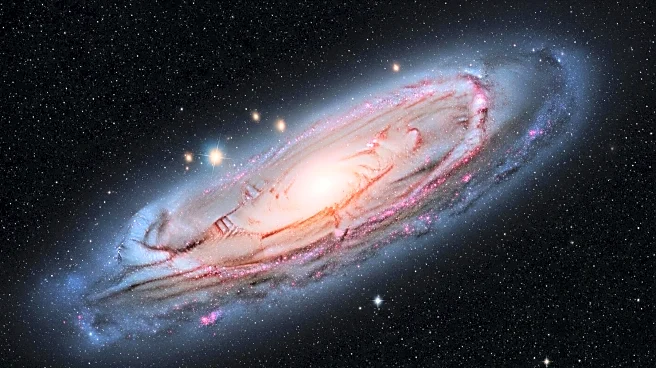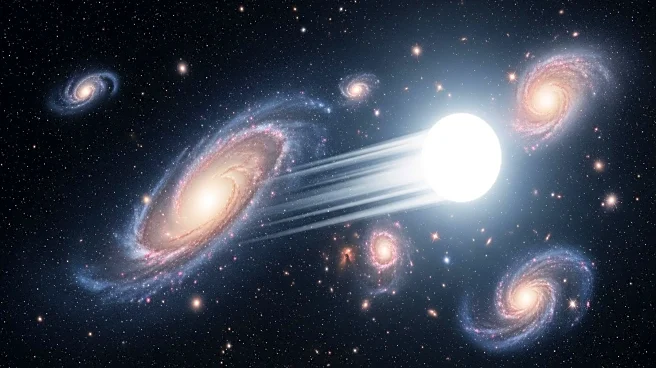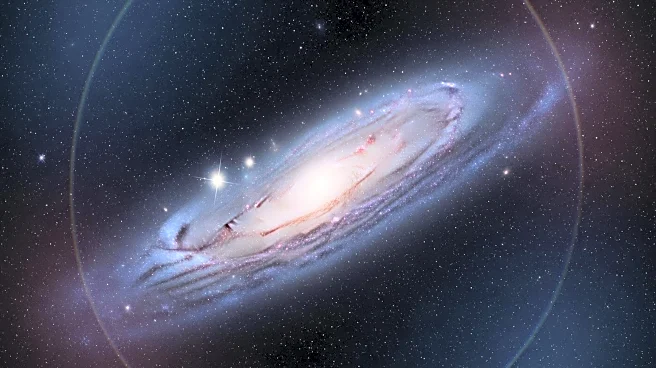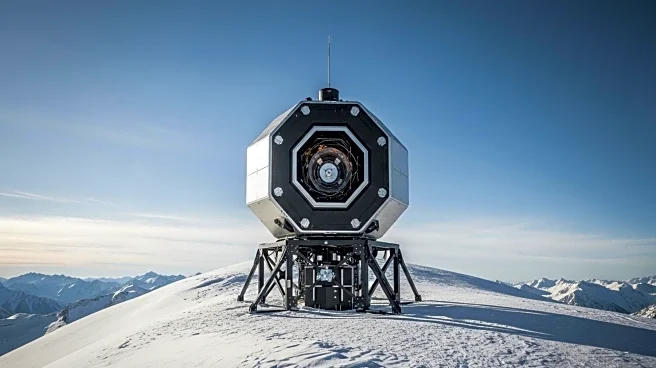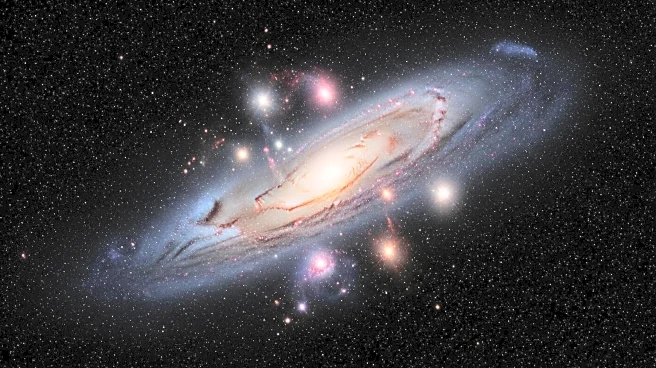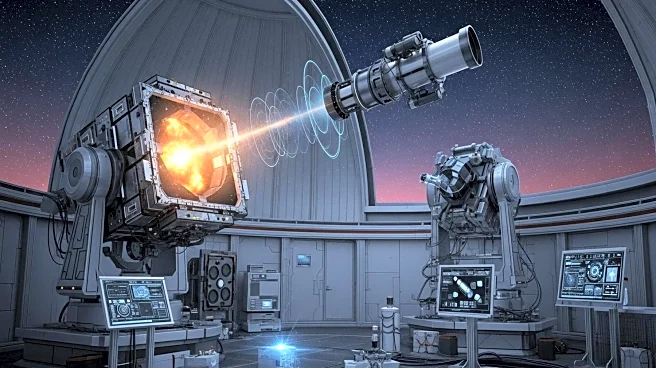What's Happening?
A recent study conducted by scientists at Sejong University in South Korea has presented findings that challenge the established theories of gravity proposed by Isaac Newton and Albert Einstein. The research focused on the orbital motions of wide binary stars, which are pairs of stars with long orbital periods and significant separations. The study analyzed data from 26,500 wide binaries within 650 lightyears, captured by the European Space Agency's Gaia space observatory. The findings revealed that at extremely low orbital accelerations, around 0.1 nanometers per second squared, the observed accelerations were 30 to 40 percent higher than predictions made by Newton-Einstein models. This deviation suggests that the standard model of gravity, which relies heavily on the concept of dark matter, may not fully explain these phenomena. Instead, the study proposes that Modified Newtonian Dynamics (MOND), a theory first introduced by Israeli scientist Mordehai Milgrom in 1983, could account for these anomalies.
Why It's Important?
The implications of this study are significant for the field of astrophysics and our understanding of the universe. If the findings are validated, they could lead to a paradigm shift in how gravity is understood, potentially challenging the reliance on dark matter as a key component of gravitational models. This could impact various scientific disciplines, including cosmology and theoretical physics, by prompting a reevaluation of existing theories and encouraging further research into alternative models like MOND. The study also highlights the limitations of current gravitational theories, which have been foundational in explaining phenomena such as black holes and gravitational waves. A shift in understanding could influence future research directions and funding priorities, as scientists seek to explore and validate new models that better explain observed cosmic behaviors.
What's Next?
The study's authors suggest that further observational support is necessary to substantiate the MOND theory and its implications for gravity. This could involve additional data collection from space observatories and more detailed analysis of wide binary star systems. The scientific community may engage in debates and discussions to assess the validity of these findings and explore their potential impact on existing gravitational theories. Researchers might also investigate other cosmic phenomena that could be explained by MOND, potentially leading to new discoveries and advancements in astrophysics. As the study gains attention, it may inspire collaborative efforts among international scientists to explore alternative gravitational models and their applications.
Beyond the Headlines
The study raises ethical and philosophical questions about the nature of scientific inquiry and the willingness to challenge established theories. It underscores the importance of remaining open to new ideas and evidence, even when they contradict long-held beliefs. The potential shift in understanding gravity could also influence educational curricula, prompting updates to textbooks and teaching materials to reflect new scientific insights. Additionally, the study may inspire public interest in astrophysics and the mysteries of the universe, encouraging broader engagement with scientific research and exploration.
